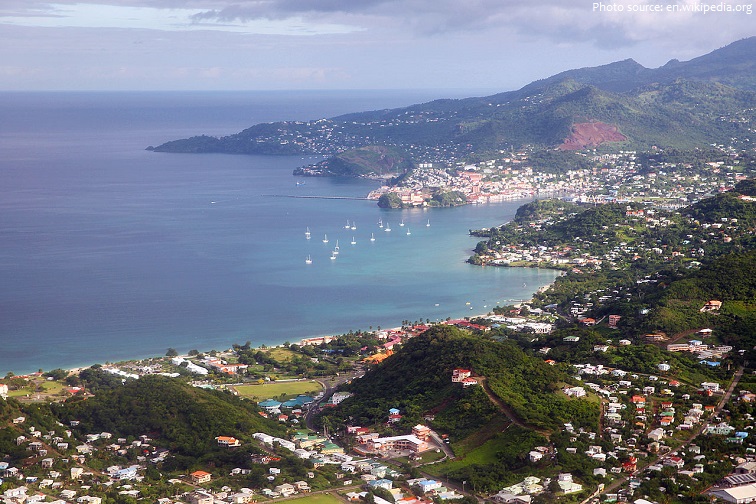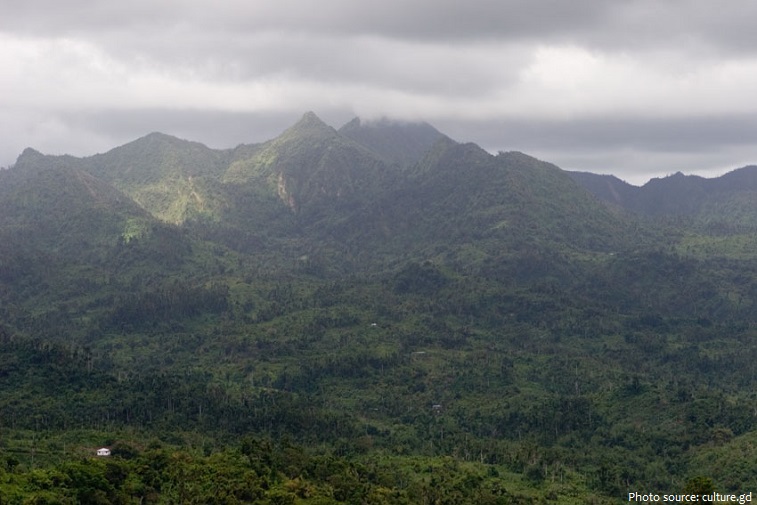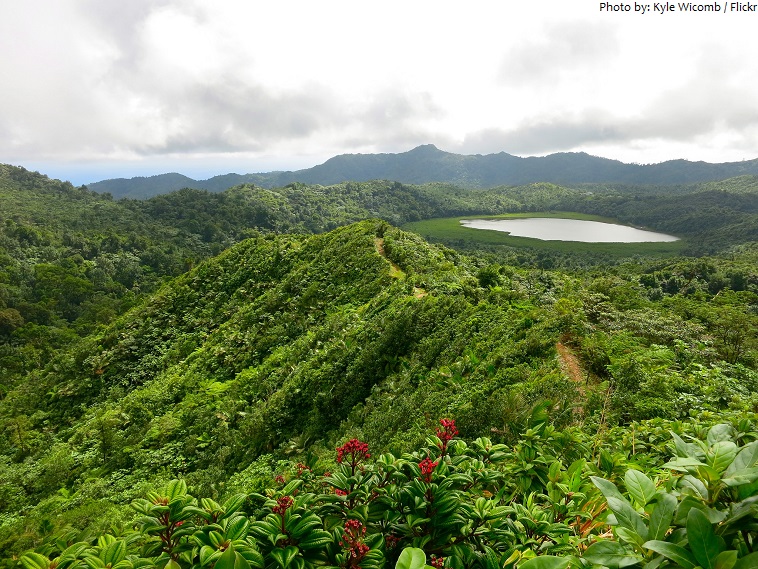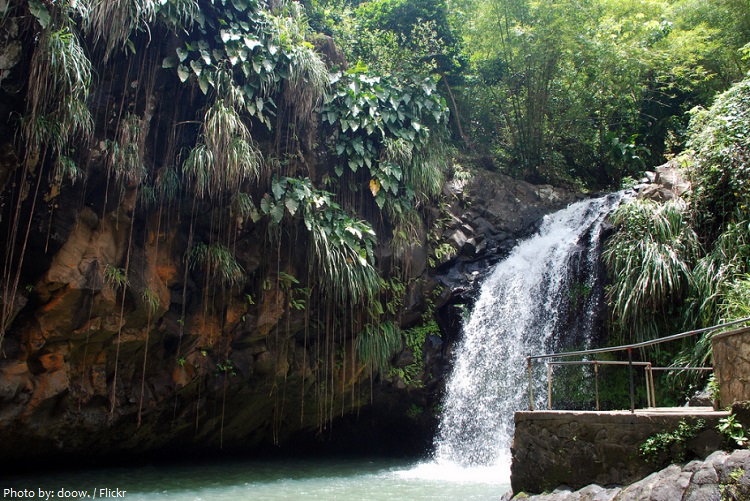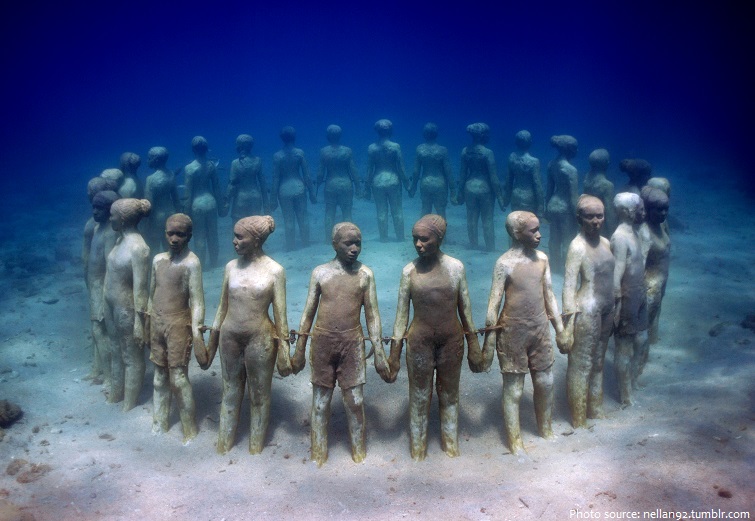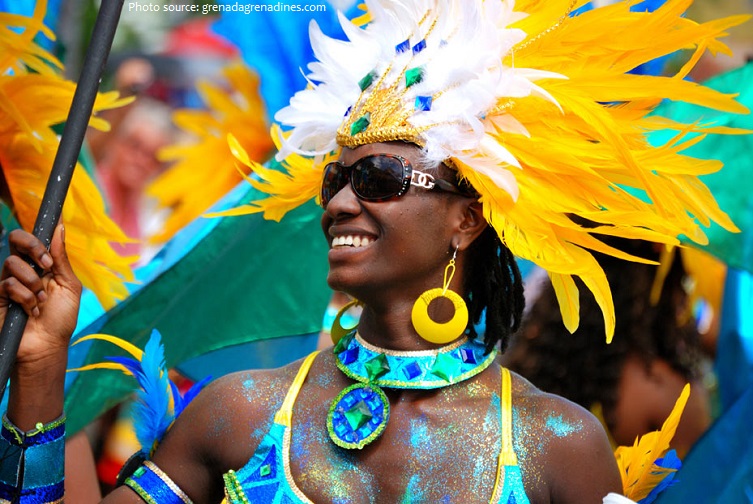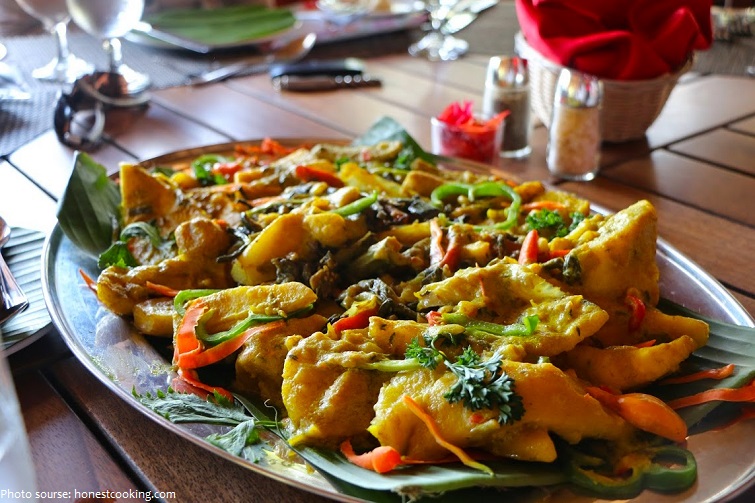Grenada is a Caribbean country comprising a main island, also called Grenada, and smaller surrounding islands.
The official name of the country is Grenada.
Grenada is located between the Caribbean Sea and Atlantic Ocean, northwest of Trinidad and Tobago, northeast of Venezuela, and southwest of Saint Vincent and the Grenadines.
The official language is English.
As of 1 January 2016, the population of Grenada was estimated to be 107,021 people.
Grenada has a total area of 344 square kilometers (133 square miles). The main island is approximately 34 kilometers (21 miles) long by 19 kilometers (12 miles) wide.
St. George’s is the capital of Grenada. The town is surrounded by a hillside of an old volcano crater and is on a horseshoe-shaped harbor. Brick and stone buildings with red tiled roofs line the streets where locals sell spices and crafts.
The islands are of volcanic origin with extremely rich soil. Its topography/landscape is mountainous covered by dense forest.
Mount Saint Catherine is with 840 meters (2,756 feet) the highest mountain in Grenada.
The coastline is 121 kilometers (75 miles) long.
Grenada is blessed with some of the loveliest sandy beaches in the Caribbean.
Grand Anse Beach is most famous and justifiably most popular. The beach is a fabulous long curve of soft, white sand, shaded by sea grapes, almond trees and palms, and backed by low-rise hotels. Sensational views unfurl up the coast, taking in the island’s capital, St George’s.
There are three National Parks located in Grenada.
The Grand Etang National Park in the interior of the island covers more than 3,800 acres. Home to a rich diversity of plants and animals, Grand Etang National Park, offers some beautiful rainforest scenery and rewarding hikes. One of the focal points of the park is the beautiful crater-formed Grand Etang Lake.
Grenada has several fabulous waterfalls, with only a few of them known to the general public.
The nearest to St. George’s is the Annandale Waterfalls [photo below], but other notable ones like Mt. Carmel, Concord, Seven Sisters and Tufton Hall are also within easy reach.
The Molinere Underwater Sculpture Park is a collection of ecological underwater contemporary art located on the west coast of Grenada and was created by British sculptor Jason de Caires Taylor. He installed concrete figures onto the ocean floor, mostly consisting of a range of human forms, from solitary individuals to a ring of children holding hands, facing into the oceanic currents. It is the world’s first underwater sculpture park and was open for public viewing in May 2006.
Constructed by the French in 1779, Fort Frederick was soon used – paradoxically – by the British to defend against the French. It’s the island’s best-preserved fort, and offers a striking panoramic views.
Built in 1705 by the French, Fort George lies on the promontory to the west of the harbor and is Grenada’s oldest fort. It was built to protect the harbor, but the police force uses many of the buildings today. Much of the fort is still intact and open to visitors, although the main draw is the spectacular 360-degree view across the town’s red-tiled roofs and church spires to the harbor and sea beyond.
Before the arrival of Europeans, Grenada was inhabited by Caribs who had driven the more peaceful Arawaks from the island. When Columbus arrived in 1498, he encountered the Caribs, who continued to rule over the island for another 150 years. The French gained control of the island in 1672 and held on to it until 1762, when the British invaded. Black slaves were granted freedom in 1833. After more than 200 years of British rule, most recently as part of the West Indies Associated States, Grenada became independent on Feb. 7, 1974, with Eric M. Gairy as prime minister.
The vast majority of the population of Grenada are of African descent. There is also a significant mixed population, along with a small European origin minority and East Indians.
Its industry consists of food, beverages, textiles, tourism and light assembly operations.
Grenada is also known as the “Island of Spice” because of the production of nutmeg and mace crops, of which it is one of the world’s largest exporters.
Grenada is also a leading producer of several different spices. Cinnamon, cloves, ginger, allspice, orange/citrus peels.
Special dishes reflect the cultural diversity of Grenada. The national dish, Oil Down, is a combination of breadfruit, coconut milk, turmeric (misnamed saffron), dumplings, callaloo (taro leaves), and salted meat such as saltfish (cod), smoked herring or salt beef.
Grenada’s House of Chocolate a unique and beautiful hand crafted mini-museum portraying the history of chocolate. It features a small café with delicious chocolates made onsite.
One of Grenada’s oldest and largest nutmeg plantations, Dougaldston Spice Estate is a rustic operation where local workers demonstrate how the island’s spices are grown and processed.
The Grenada dove, which is a critically endangered species, is the national bird of Grenada.
The people of Grenada are called Grenadians.
Grenada boasts the oldest functioning water-propelled distillery in the Caribbean – River Antoine Rum Distillery.
Wearing camouflage (army’s uniform) is considered a crime.
In 1983, the U.S. invaded Grenada. Starting with 2000 troops, nearly 6,000 were sent to the island. By the time the invasion ended, 20 U.S. and 60 Cuban and Grenadian troops were killed in the encounter. However, the U.S. claimed victory within weeks. The invasion was codenamed “Operation Urgent Fury,” and was carried out under the presidency of Ronald Wilson Reagan.

